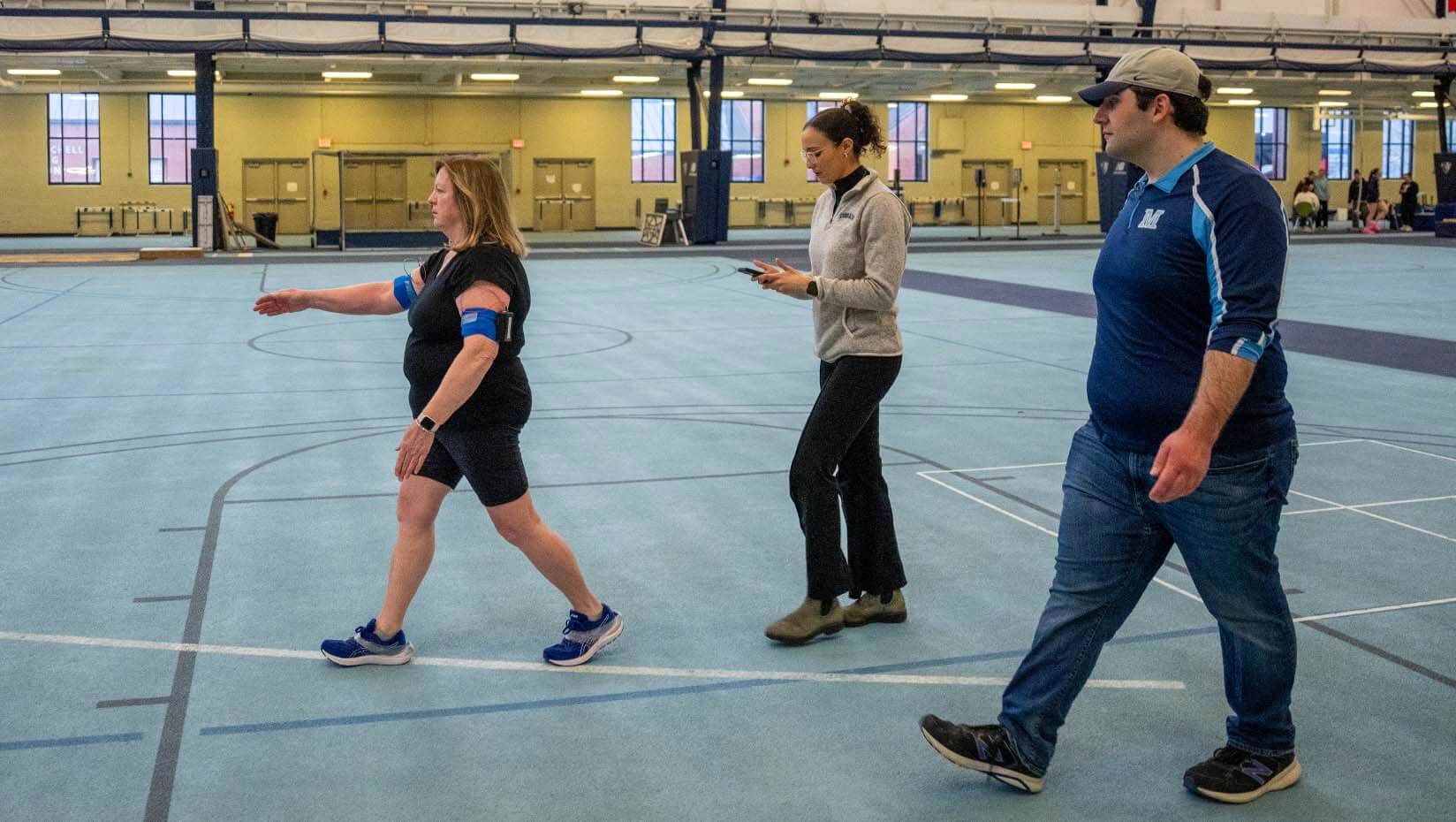
New device improves mobility among seniors through arm movement
Aging can impair people’s ability to maintain their balance while walking, increasing the risk for falls and injuries. One method for improving motor skills for walking is through training or rehabilitating gait — a person’s walking pattern.
With the population of Maine — the oldest in the nation — growing older, a team of University of Maine researchers, led by Ph.D. candidate Ines Khiyara, developed a new device that improves gait, and therefore mobility, among seniors by targeting an overlooked aspect of gait training: arm movement.
The device, a small wearable haptic feedback system, attaches to the user’s arms and sends vibrations telling them when to move their arms. The vibrations guide users to swing their arms in a specific rhythm based on their individual walking pace, helping them increase or reduce their arm cycle time, which inversely affects their walking speed.
Walking requires coordinated arm and leg movements. Current methods for gait training focus on improving leg movements but often overlook the importance of arm movement, particularly arm swing, which impacts stability, balance and the efficiency of energy use while walking.
With its small size, low cost and accessible use, researchers hope their wearable haptic cueing system could someday be used for at-home gait training and be incorporated into existing rehabilitation practices.
“This could help older adults walk more confidently and safely, lowering their risk of falls and helping them stay independent — not just in Maine, but anywhere aging populations are growing,” said Khiyara, who is studying mechanical engineering with a concentration in biomechanics and biorobotics.
Khiyara conducted the study using a wearable haptic cueing system developed in her lab, under the supervision of her Ph.D. advisor, Babak Hejrati, associate professor of mechanical engineering.
The research team tested their device through a study involving 20 participants between the ages of 65 and 92, with an average age of 73. When the device provided feedback, the participants immediately swung their arms forward, synchronizing their arm swing with the rhythmic cues. The coordination between participants’ arm and leg movements improved and, as a result, so did their gait speed and symmetry. Participants also reported feeling more balanced.
Researchers reported their findings in a recent paper published in the academic journal Annals of Biomedical Engineering.
This new device will be one of two incorporated into a comprehensive wearable robotic system that enables home-based and independent walking training for older adults. Spearheaded by Hejrati, also director of the Biorobotics and Biomechanics Laboratory, this system will be able to help induce proper whole body response and enhance walking ability. The research also examines how the neural circuits that control limb movements interact while walking at different speeds to produce coordinated arm and leg movements in subjects without mobility issues.
This line research is backed by grants that Hejrati received, including a $551,912 National Science Foundation CAREER Award — one of the organization’s most prestigious awards in support of early-career faculty — gifted to Hejrati in 2022, as well as a $432,000 grant from the National Institute on Aging allocated in 2024.
Contact: Marcus Wolf, 207.581.3721; marcus.wolf@maine.edu
